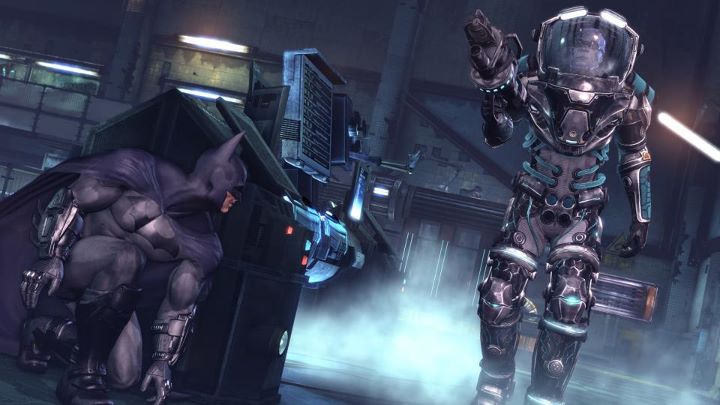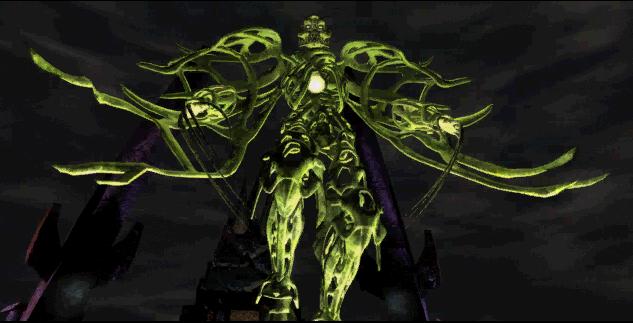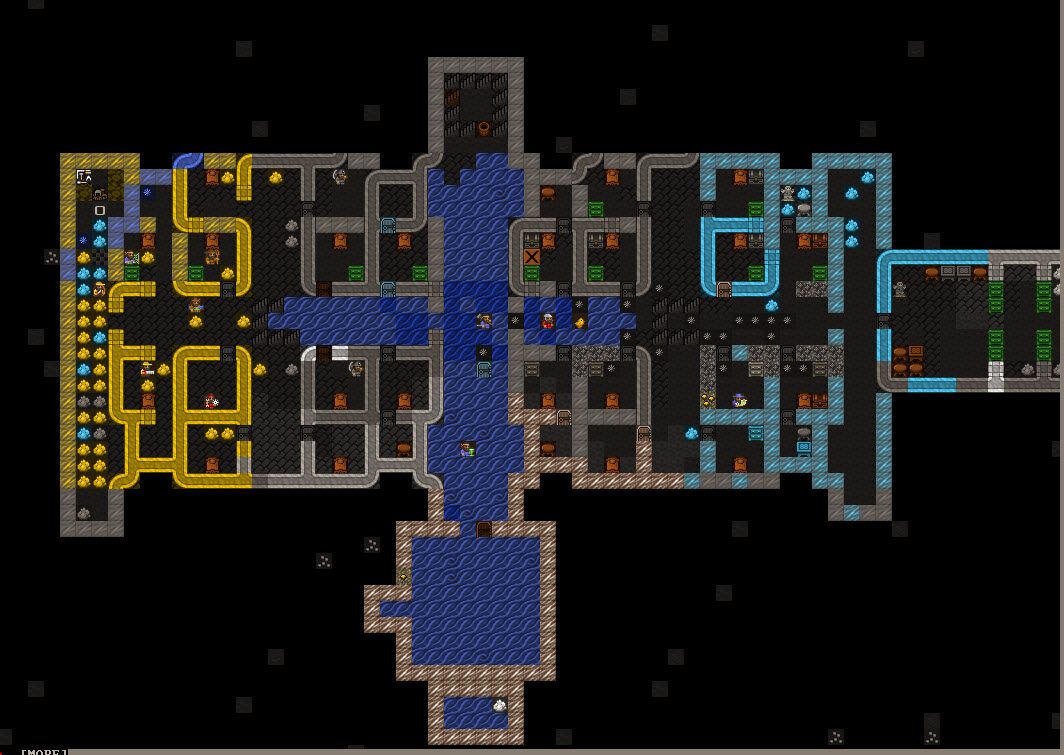The best and worst boss fights in PC gaming
The most fun and the most frustrating bosses, from Dark Souls and Undertale to Mass Effect 2 and Arkham Knight.
Boss fights are great. Except when they're terrible! Things got heated when the PC Gamer staff debated whether the boss fight is good design or an antiquated videogame trope, so we decided to present our strongest evidence for each case.
First up: a collection of our favorite bosses, the battles that have stuck with us for years. On page two, the list of shame: a whole bunch of bad, stupid bosses we hated fighting but love talking shit about. They all deserve it.

The Master, Fallout
Jody: I've finished Fallout twice and never defeated The Master by just straight-up shooting him in the eyes or whatever other bits he has—he's a mutant lump of flesh so unfathomable if you try for an aimed shot half of him is just labeled "???"
The first time I made it to the end of Fallout it was with a sneaky, high-agility character who stealthed around his base and set off a nuke in it. The second time it was with a diplomatic, high-charisma type who talked the Master to death, choosing conversation options that exposed his flawed philosophy, made him realize his own monstrosity, and led him to suicide.
There's an option to just attack if you want to take the Master on with pulse grenades and a real big gun if that's your thing, but the fact you don't have to is what makes the climax of Fallout so great. Plenty of people hate bosses, so making them optional seems like such an obvious kindness it's baffling that 21 years later it's still uncommon.
Argus mech, Vanquish
Wes: Japanese videogames have been chasing what I'll call the Macross Aesthetic for decades: an overwhelming, awe-inspiring flurry of missiles crisscrossing the sky, white smoke arcing behind them. For years this was mainly a thing in 2D games: bullet hell SHMUPs and the incredible Bangai-o. Vanquish's Argus mech, while a pretty straightforward "shoot the weak point" battle, is one of my favorite boss fights of all time because it completely delivers on the promise of translating the Macross missile explosion into 3D. And it looks unbelievably cool doing it.
Deal the Argus mech enough damage, and it'll stop firing at you with its cannon to unleash a volley of hundreds of missiles. It's a stunning moment, but it's also a perfect embodiment of what Vanquish is as a game. It's a melding of over-the-top, distinctly anime Japanese action with the conventions of an American third-person shooter. In other words, there's a cliche, gruff American antihero, but he wears power armor and kicks giant missile-spewing mechs so hard they explode.
Keep up to date with the most important stories and the best deals, as picked by the PC Gamer team.

Artorias of the Abyss, Dark Souls
Austin: Artorias of the Abyss reads like a Dark Souls boss. He's a tragic figure both emblematic of and integral to the overarching story of the Abyss DLC, and he's characterized through NPC dialogue and descriptions embedded in weapons and armor. You don't want to kill him, but he's too far gone and you have no choice. That's classic Dark Souls. But at the same time, he doesn't feel like a Dark Souls boss, and that's what makes him so great.
Most of the bosses in the original game are slow, lumbering monsters that you fight by nipping at their heels until they fall over. Artorias is the total opposite. He's a relatively small but still incredibly imposing knight, and he moves wildly and quickly. His form and figure have been distorted by the abyss, but he's still got the moves. You spend the entire game plinking away at behemoths in the 19 seconds it takes them to wind up an attack, and here comes Artorias with some freakin' front-flips. He fights like you, the player. He rolls like you, swings like you, retreats like you. He's a refreshing, relentless wake-up call who gives you zero breathing room and feels like a Bloodborne or Dark Souls 3 boss, and I wouldn't have it any other way.
Jubileus, The Creator, Bayonetta
Austin: How else could a game as stylish and over-the-top as Bayonetta end if not in a galactic punchup? At this point in the game, you're picking basic enemies out of your teeth and scraping titan-sized mini-bosses off your heels. Then Jubileus, the biggest of the big bads, descends from on high with a dozen health bars and multiple forms just askin' for an ass-kickin'.
Jubileus is cleaner and more varied than most giant bosses, which have a tendency to play themselves. She has several distinct forms with unique attacks that expose cleverly placed weak points, and she gets better and better as you whittle her down. The level around you changes. Different weapons excel at damaging certain parts. It's a long fight but it earns its runtime, and Jeanne's role as partner manages to tie a climactic bow on the game's otherwise tangled story.
She's a great final boss too, a delicious mix of everything Bayonetta does right: bonkers vehicle sections, short and forgiving quick-time events, dramatic camera angles and, of course, unforgettable finishers. I can think of no better way to send off one of Platinum Games' finest than pile-driving a god into the sun.

Flowey, Undertale
Wes Fenlon: What a hell of an ending. Undertale is a game that constantly upsets your expectations, but its final boss—not exactly the true final boss, but that's part of what makes the encounter so good—breaks away from Undertale's aesthetic, and really from its reality. The fight tears at the structure of the game, making you survive an intense gauntlet, tempting you again and again to break from pacifism, before finally setting you up to play through parts of Undertale again to see the true ending. That ultimate battle is more emotionally affecting, but the first encounter with Flowey is where Undertale truly shows off how brilliantly it can execute on its meta ideas.
Dragonslayer Ornstein and Executioner Smough, Dark Souls
Joe: I've killed Gwyn loads of times. I've both lit and walked away from the final bonfire. I've tackled Lordran's brilliantly designed world in multiple configurations. I've watched countless walkthroughs and let's plays. And yet no matter how many times I complete From Software's gothic action role-player Dark Souls, I can never, ever, beat Dragonslayer Ornstein and Executioner Smough on my first attempt without the help of Solaire.
But I love it. I love the anticipation of trekking through Anor Londo, and stocking up for the big fight. I love swapping polite exchanges with the Giant Blacksmith as I upgrade my lightning halberd. I love grinding out a few extra souls levels with the Royal Sentinels that guard the boss arena. I love concocting an ill-conceived strategy in my head beforehand. I love saying to myself: "This is it. This is the moment I finally defeat these bastards first time without the help of the sunbro", before inevitably peeling my splattered face from the forum's floor thereafter.
You see, no matter how many times I'm floored by Ornstein and Smough, the fact that I'm yet to topple them on my lonesome gives me an excuse to return to one of my favourite games. With two hulking baddies—and one final form nemesis—this fight's scope for change and incidental moments makes it, for me at least, near impossible to predict. It's fast, it's frantic, and no matter how many tries it takes, I'm yet to feel a similar sense of accomplishment from any other game.
Of course, Dark Souls Remastered is just around the corner too. We go again, boys.

Mr Freeze, Batman: Arkham City
Samuel: The bosses in the Arkham series are uneven, but the second game showed considerable progress over the first, which mostly featured repetitive encounters with larger enemies. Mr Freeze is a smartly-designed battle, letting the player use each technique at Batman's disposal once—electricity, explosives and so on—before Victor Fries remembers that method and it can't be repeated.
Worse than that, he's iced up the gargoyles so there's no hiding from him above, which is a key part of your arsenal when trying to play Arkham stealthily. You're stuck on the ground with Mr Freeze as he stalks you. A former colleague of mine compared it to a great Metal Gear boss fight, and he's right—it's similarly tricksy and demands clever thinking from the player.
Monster Zoo, Dungeons of Dredmor
Evan: Can a room be a boss? I submit that a room can be a boss.
Jack Krauser, Resident Evil 4
Samuel: Resident Evil 4 is one of very few games that gets away with QTEs, which have mostly died out in games over the past decade. Leon's knife fight with Krauser is mostly cutscene-led, but it's a great example of the form—a tense sequence where you finally get to see the two characters face off.
The boss fight proper is great too, set in a maze of ruins where he'll run at you with a knife, and it later escalates to a final battle on a precarious platform as Krauser mutates. Sometimes this encounter will transition into a QTE knife fight in-game, too, which is a nice touch. Resident Evil 4's story is hokey but fun, and while you're never quite emotionally invested, it's fun to take the journey. You wait a long time to see Leon and Krauser finally face off, and the battle is exciting, over-the-top and even cinematic—it's Resident Evil 4 at its best.

The Transcendent One, Planescape: Torment
One of the biggest failings of boss fights is how often they abandon the principles of the game they're in, robbing you of agency or creativity in favor of a big arena slugfest or fancy cinematic. The opposite of that is Planescape: Torment, maybe the best RPG of all time, which utterly commits to letting you talk your way out of conflict, up until the very end. There are a number of ways your encounter with The Transcendent One can end, including combat if that's your wish. But dialogue, as always in Planescape, proves to be the more interesting option. Gaming rarely manages to get this philosophical, and even more rarely pulls it off.

Twisted Marionette, Guild Wars 2
Phil: The Twisted Marionette was available for about a month during Guild Wars 2's first update season. You can't fight it anymore—you haven't been able to fight it for over four years—but I still think it's one of the best bosses I've defeated. Rather than an instanced encounter, the Marionette was an open world event that triggered every two hours. Players on the map would have to organise themselves into five lanes of (if you were lucky) around 25 players each. The fight had two main phases. The bulk of your time was spent in your lane, defending against waves of enemies. In addition, each lane took turns in the central chamber, where they were distributed across five mini-arenas—each with a Champion to defeat. Succeed, and one of the Marionette's chains was cut. Fail, and you were one step closer to annihilation.
If each lane succeeded, the battle was won and the Marionette would collapse. It felt elegant—requiring more coordination than just chipping away at a big monster's health, but not so much that only the most hardcore servers had a shot of bringing it down. There was an arc—our server spent days unable to make the kill, but slowly started to refine our approach. We failed loads, but the process of learning, optimisation and eventually overcoming the challenge remains one of my favourite journeys within the game.

Aquifers, Dwarf Fortress
Wes Fenlon: Yeah, goblins and elves and running out of booze are all bad news. But the truest enemy of any fortress builder is the mighty aquifer, an underground water source that can quickly and brutally flood your fortress if you don't know how to deal with it. There's an entire Dwarf Fortress wiki page devoted to aquifers and the strategies for defeating them. That's a boss fight if I've ever seen one.

Wes has been covering games and hardware for more than 10 years, first at tech sites like The Wirecutter and Tested before joining the PC Gamer team in 2014. Wes plays a little bit of everything, but he'll always jump at the chance to cover emulation and Japanese games.
When he's not obsessively optimizing and re-optimizing a tangle of conveyor belts in Satisfactory (it's really becoming a problem), he's probably playing a 20-year-old Final Fantasy or some opaque ASCII roguelike. With a focus on writing and editing features, he seeks out personal stories and in-depth histories from the corners of PC gaming and its niche communities. 50% pizza by volume (deep dish, to be specific).
- Jody MacgregorWeekend/AU Editor
- Austin WoodStaff writer, GamesRadar
- Samuel Roberts

